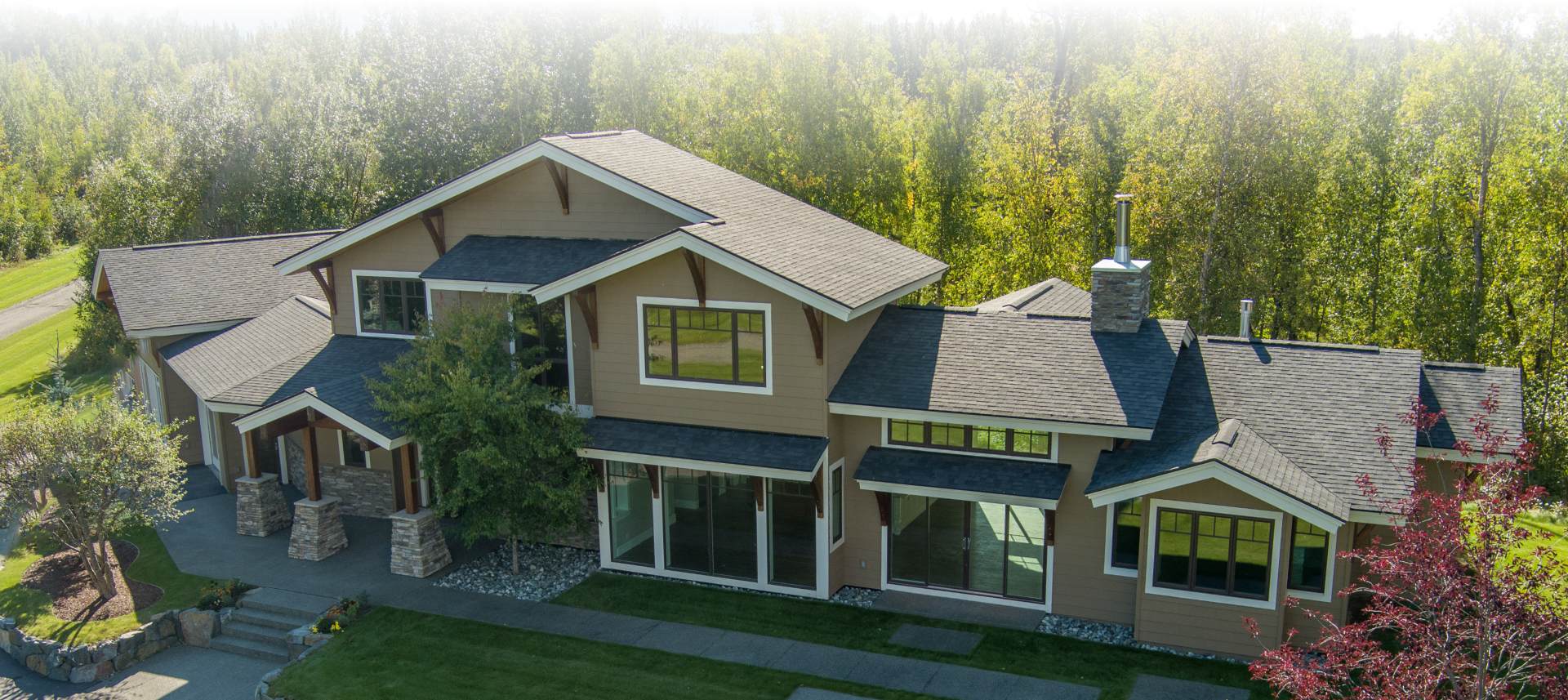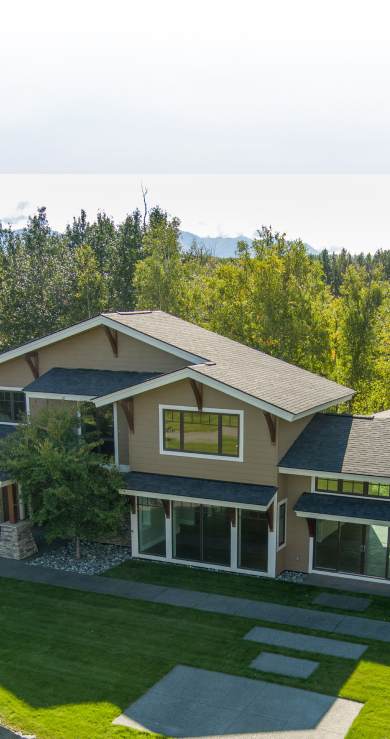10 Design Choices to Make Your Custom Home Energy-Efficient
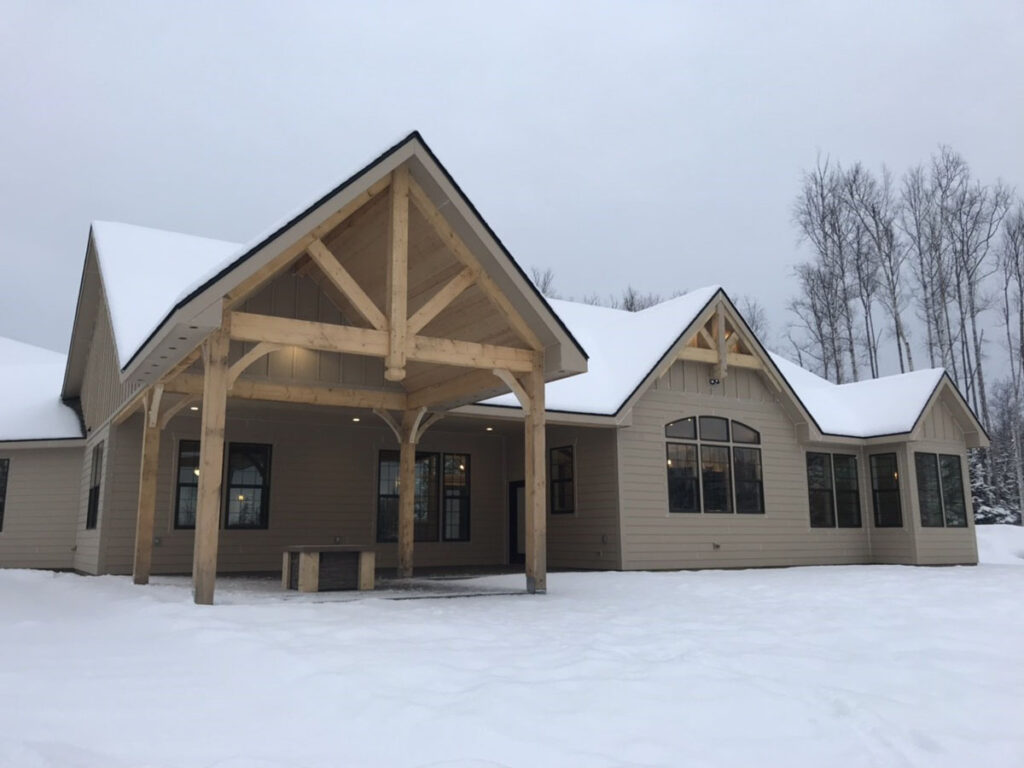
If you’re building a custom home in Alaska, of course you want it to be beautiful and functional, but energy efficiency is another important factor you need to consider when choosing your design-build team.
In our climate, an energy-efficient home isn’t just a modern luxury — it’s a necessity. Learn about 10 choices that blend innovative design with energy efficient building.
1. Under Slab Insulation
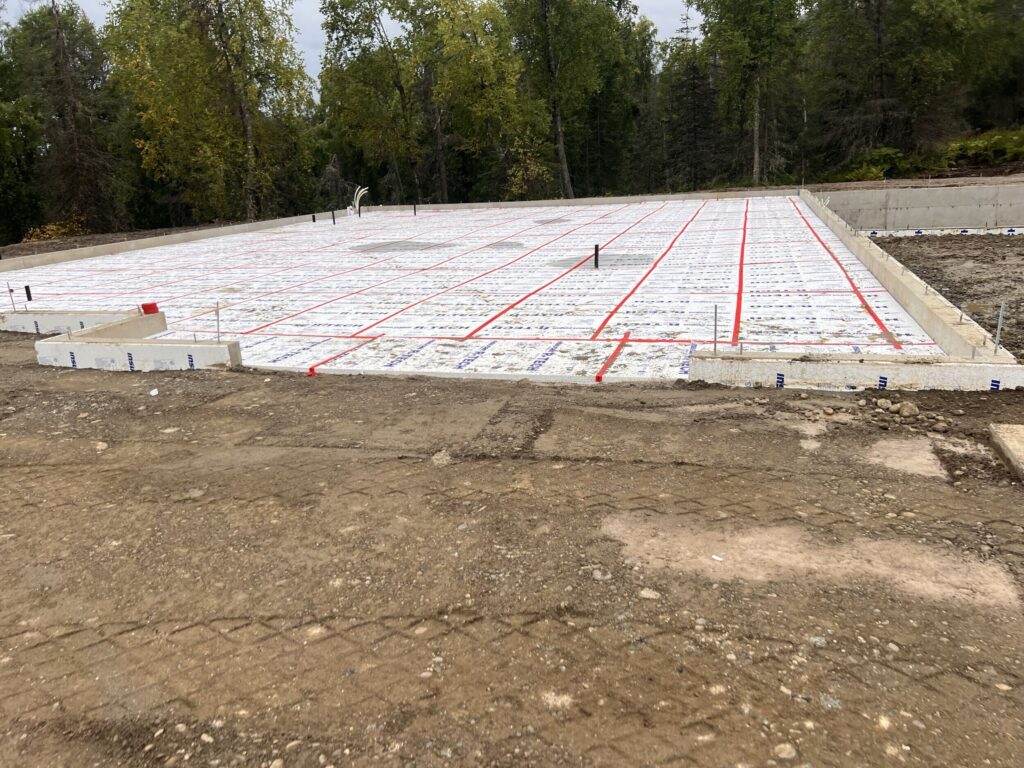
Ground temperature in Alaska is cold – around 42 degrees year round in the Matsu Valley. Insulating the ground beneath a garage or basement slab can keep your feet warm and the utility bills down. 2” of rigid insulation is recommended, and even 4” can be a great option.
2. Advanced Framing Techniques
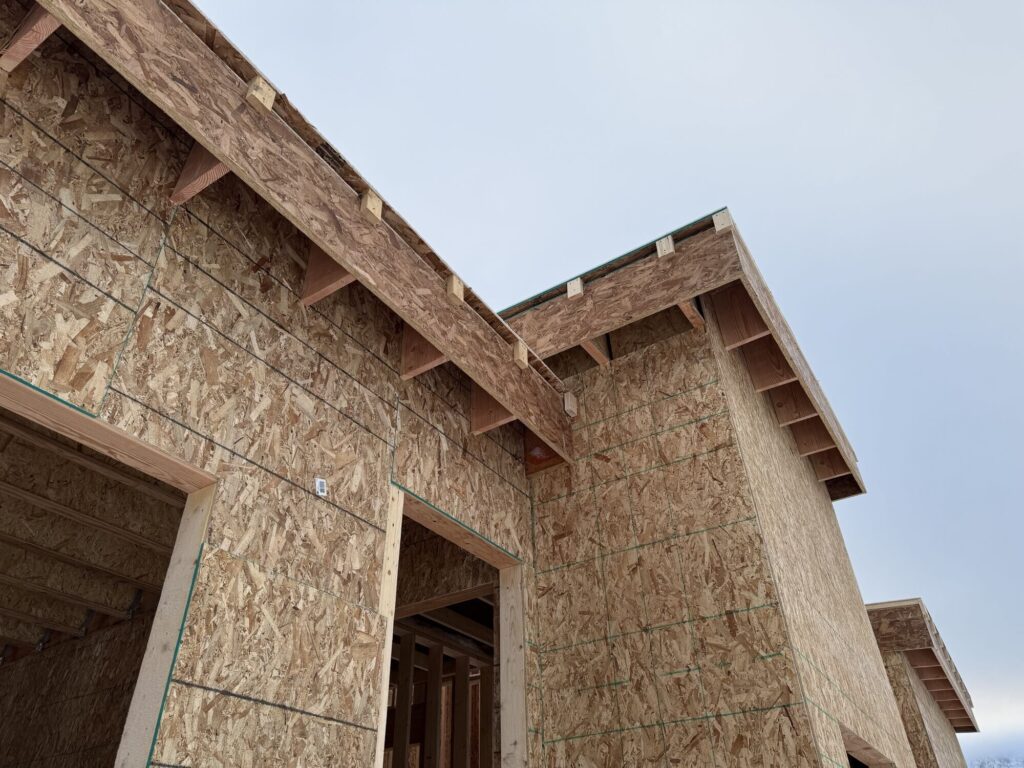
Advanced framing is a modern technique for reducing lumber use and waste during construction. It provides a win-win solution by replacing unnecessary lumber with insulation materials, which boosts energy efficiency without compromising structural integrity.
Advanced framing techniques significantly improves R-value by reducing thermal bridging and maximizing insulated wall area for a warm, efficient home. On nontraditional roofs, including “stick framed,” flat roofs, SIPS panel roofs, or similar, adding a “vented over roof” is often the best technique to minimize icing and increase effectiveness.
3. Airtight Building Envelopes
Creating an airtight building envelope is very important for energy efficiency. Using The Whole House System Falcon Homes are designed to function as a system. The walls, windows, roof, and mechanical systems form this “building envelope” and account for around 30% of the energy use in a home.
4. Passive Solar Design
A home that leverages passive solar design captures solar energy to light and warm your space naturally.
Glass is necessary, but it’s not exactly energy-efficient. The key is to orient as many windows as possible within 30 degrees of true south to maximize natural light and solar gain.
5. Heating Fuel Choices
The type of fuel used to heat a home is important to consider. Natural gas is by far the least cost per BTU available in Alaska. If that is unavailable, fuel oil is the next best option for permanent heat. Then propane, and lastly electricity. Adding a woodstove can also be a great way to increase energy savings and comfort, plus it can offer an alternative heat source in the case of a power outage. So when shopping for land, make sure you research and confirm what heating choices you will have available.
6. Insulation Choices
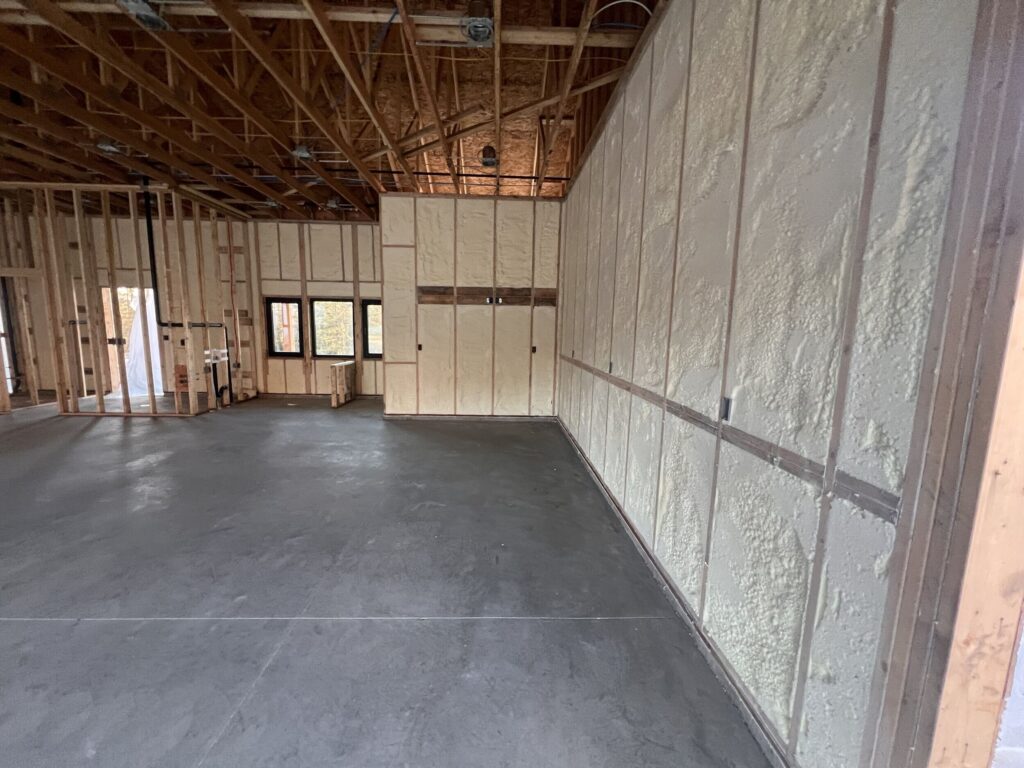
Upgraded wall, rim joist, and attic insulation highlight the difference of a Falcon Home. Spray-foam insulation is a standard product in all Falcon Homes and offers superior R-value, air tightness, and enhanced sound qualities.
7. High Performance Windows

Windows are a huge consideration, and greatly impact comfort and energy efficiency. Quantity, size, and location are considered first, and then R-value (or U-value). The type of material used for the window frames, how the frames are built, what type of opening styles are chosen, the number of glass panes included, and how the windows are installed all affect energy efficiency, AND impact the amount of ice or moisture that can form on the window surface during frigid temperatures. Not all windows are created equal. ENERGY STAR®-certified high-performance windows significantly reduce energy loss. Windows must have a superior U-factor, solar heat gain coefficient, visible transmittance, and air infiltration rate to earn an ENERGY STAR certification. When shopping for window options, remember that well-insulated windows have an R-value of 5 or higher.
8. Heating & Ventilation
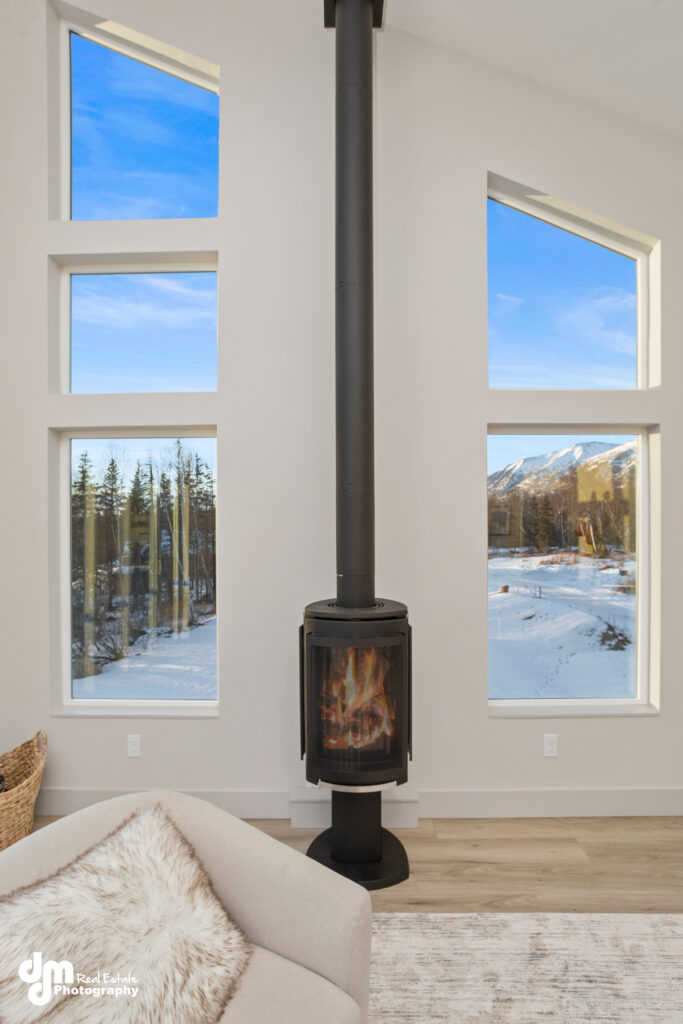
The “best” heating appliances vary by geographic location, fuel source, and lifestyle. In general, a direct vented appliance is the most energy efficient choice, and options like “modulating” furnaces and on-demand water heaters are often used in Alaska. Our design team helps educate clients on the differences between a boiler, furnace, toyo, and direct vent vs atmospheric vented appliances. There are also options to consider for electric heat mats, hydronic heating options, gas fireplaces, and wood stoves.
9. Mechanical Ventilation
A well-insulated home keeps out cold air, but it can also keep air trapped inside which can lead to poor indoor air quality. Mechanical ventilation is a must with air tight building techniques. See The Whole House System for additional reading.
Installing a heat recovery ventilation (HRV) system can help with fresh air circulation while simultaneously recovering heat from the exhaust air. An HRV also helps to maintain a “balanced” indoor air pressure.
10. Lighting Choices
Yes, lighting can make a huge difference, specifically what type of light fixtures are installed. Non-sealed can lights can leak excessive air and moisture into the attic, causing unnecessary heat loss and ice build-up. LED disc lights are a great option over traditional can lights, especially in a “stick frame” or parallel cord truss roof system where ventilation and R-value are difficult to get.
Extra Credit: Solar Panels
Installing solar panels means investing in a greener, more cost-effective future. Solar panels transform Alaska’s abundant summer sunlight into electricity, reducing your utility bills and environmental impact for years to come.
Your panels will produce excess electricity during the spring and summer, which you sell back to the utility company for a credit on future utility bills. Solar panels will produce significantly less power in the fall and winter because of the limited sunlight, but the technology continues to get better, making Alaska a more attractive option for solar.
Build a Greener Home With Falcon Alaska
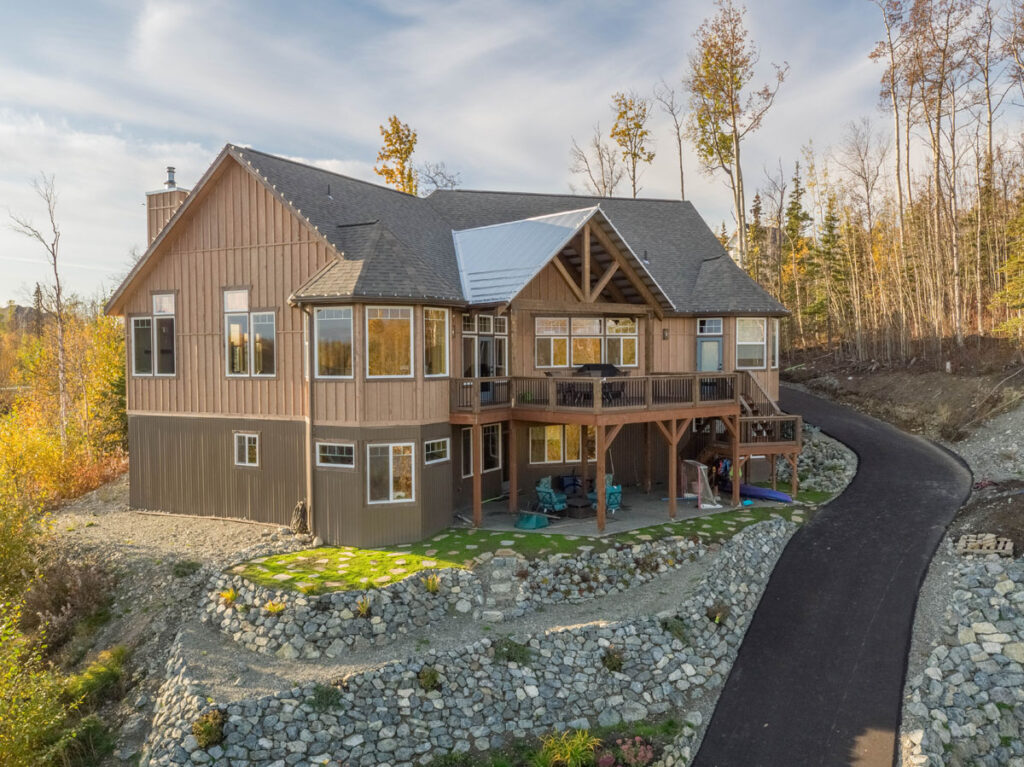
If you need an environmentally minded design-build team to ensure minimal waste and optimal energy efficiency, work with Falcon Alaska. We’ll ensure the best value for your investment because we provide a client-centric approach that can bring your dream home to life.
Turnkey design service, exceptional build quality, and transparent communication allow us to ensure your satisfaction and craft a home that will stand the test of time.
Ready to bring your vision to life? Contact Falcon to schedule a consultation, and we’ll build an extraordinary home together.


